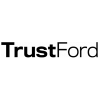
Dealing with sellers
The art of dealing with sellers can be a difficult exercise especially if youre not fully prepared.
Doing your research can get you a long way. Here we provide you valuable information to leave you fully prepared. • Get a valuation to find out the true price of the car you are purchasing.
• Contact your seller and ask the right questions, to reveal valuable information about the car.
• Arrange a viewing and test drive.
• Check the documents.
• Haggle for the best price.
Know your price
Once you’ve selected the make and model of car you want, worked out your budget and read all the reviews, you then need to be clued up on price. Use our free car valuation tool to determine the car’s current value. You can do so by clicking on the value my car link below.
Value my car
To establish the price youre prepared to pay for your next car, you need to find out the car’s going rate whether via private sale or through a dealer whichever is applicable to you. Our online valuation tool provides you with all the data you need.
Contacting the seller
Now you know your price, jot down all the questions you need to ask the seller before making contact. Your first conversation with the seller can reveal lots of valuable information, so choose your questions wisely. The first thing you want to establish is who exactly is selling the car? Is it a private seller or car trader? If it is a car trader, by law the advert should state Trade or ‘T’. If you buy through trade you have consumer rights that you wouldn’t have if buying privately. To this end some of the smaller traders out there can try and disguise who they are. When you first contact the seller, it is wise to say you are ‘calling to find out about the car.’ If they are a trader they are likely to ask which car you are calling about. It is also a good idea to find out how long they have owned it. If it is only a few months then this should probe you to ask them whether they are a trader or not.
Questions to ask
Once you know who the seller is additional things you may want to ask are:
•What condition is the car in?
•How many previous keepers has it had?
•Why are they selling?
•How many miles are on the clock?
•When did the car last have an MOT and does the seller have past MOT certificates?
•How much road tax is left on the car?
•What is the service history of the car? When is it next due for a service and is it due for any maintenance such as an oil change or a new cambelt?
•Does the car have a history of being stolen or involved in any accidents?
•Has the car had any recent repairs and if so does it have any corresponding invoices or receipts?
•Has it had any modifications?
•Did the past owner smoke or have any pets?
Asking these questions during your initial phone call should help to build up a good picture of the car, and if the car is still of interest the next step is to arrange a viewing.
Arranging a viewing and test drive
It is a good idea to arrange a viewing during daylight so you can see the car clearly. You don’t want bad light to obscure any scratches or dents the car may have. If it’s a private sale, arrange to view the car at the seller’s house or if it’s a trade sale at their premises. You want to make sure addresses correspond with the car’s paperwork.
When it comes to buying cars, first impressions aren’t everything. Don’t fall into the trap of being sold just on good looks. A valet can do wonders for any car, yet a shining, gleaming exterior isn’t all that counts. The only way to really get a feel for a car is by taking it for a test drive.
Plan your test drive when you have plenty of time so you can get the most out of it. It can be tempting to just go for a quick spin around the block, but it is wise to take your time to really get a feel for the car and to gather all the information you need. Don’t let a salesman distract you on your test drive, focus on the drive itself and take the car over different terrains, round bends, over bumps so you can test the car’s handling and speed. Change lanes, start and stop, accelerate and brake, try three point turns, all the manoeuvres you can to gauge what the day to day driving experience would be like in the car.
Inspect the interior, seat positioning, boot space and what it feels like to be a passenger in the back. Open the bonnet and have a look at the engine and keep an eye out for any oil or fluid leaks. If the car is more than a couple of years old then consider a full independent mechanical inspection.
Insist on seeing the car’s paperwork and check it over closely. It can unravel a lot about the car’s roadworthiness and history. A car without paperwork can leave you with problems when coming to register your name with it, and a lack of service history can open up a whole can of worms and mechanical issues.
Paperwork to check is:
•Service history
Ideally you want to see a folder with the car’s full service history. This will indicate that the car has been looked after. Check the service book has been stamped and dated and all is up-to-date. Be aware that stamps can be forged so it is useful to see receipts for any work that has been done and ensure the registration number on the receipts match up with the car on sale. Study the stamps and see where the car has been serviced. Any queries or suspicions you have can always be checked with the garage. Another thing to look for is checking the car has not been clocked. Study the mileage listed on the documents is in line with what is displayed on the car. You will also want to ensure any major work such as cambelt changes have been carried out at the correct time.
•V5C Document (Logbook)
The vehicle registration document also known as the logbook holds details of the vehicle and its registered keeper. Check details on the V5 match those of the car. Make sure the registration number (number plate) and the vehicle identification number (VIN) correspond to the car itself. When purchasing the car you will need to ensure the correct parts of the V5 are completed and sent off to the DVLA. You will need to keep hold of the new keeper’s section of the document. Until the updated document is sent out to you, this section is proof that you are the new owner.
•MOT Certificate
Most vehicles over three years old require an annual MOT test to check that they are roadworthy and meet the government’s standards. Carefully examine the car’s MOT certificate to ensure it is not a fake. MOT certificates are now printed in order to reduce fraud. You can check the vehicle’s MOT status online on the directgov website to see whether it has passed a test or not. To do this you will need the vehicle’s registration number and MOT test number.
Haggle
When coming to buying a car, sellers expect a potential buyer to haggle, therefore factor this in to their asking price. Doing your research on a car could potentially save you hundreds of pounds so it’s important to do your homework.
•Get a valuation to find out the true price of the car you are purchasing
•Keep your cool. If you come across calm, collected and confident you have a better chance of getting a better price.
•Carry out a car history check. Any outstanding finance or disadvantageous history on the car gives you bargaining power.
•Start your bidding low and work out a maximum price you’re prepared to go to.
•Haggling doesn’t have to be just about the price of the car, negotiate on added extras such as a full tank, MOT or service.
•Walk away. Don’t be afraid to leave if you can’t come to an agreement. There are plenty of other cars available.
Buy with confidence













